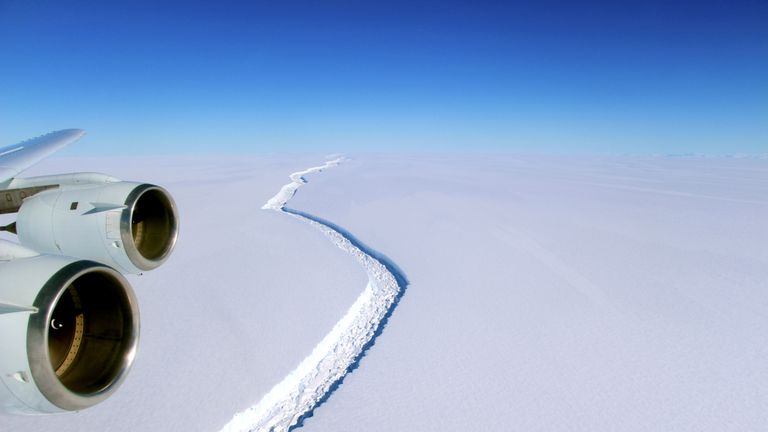'Mysterious' marine life lies beneath breakaway Larsen C iceberg in Antarctica
The release of the trillion-ton iceberg means researchers can explore an ecosystem which has been hidden for up to 120,000 years.
Monday 9 October 2017 19:25, UK
A team of scientists is planning an expedition to explore the hidden marine life which has been exposed by a trillion-ton iceberg breaking off the West Antarctic ice shelf.
The 2,200 square mile section of the Larsen C ice shelf - almost four times the size of London - , reducing the size of the shelf by 12% and changing the landscape of the peninsula forever.
The release of the new iceberg - called calving - means researchers can now for the first time investigate the "mysterious marine ecosystem" that has been hidden beneath it for up to 120,000 years.
Marine biologist Katrin Linse, from the British Antarctic Survey (BAS), is leading the mission.
She said: "We have a unique opportunity to study how marine life responds to a dramatic environmental change.
"Normally, it takes years to plan the logistics for marine research cruises. Our funder, NERC (Natural Environment Research Council), and our ship operations team recognise the urgency to act quickly.
"Everyone is pulling out the stops to make this happen.
"All we need now is for the iceberg to move far enough away from the remaining shelf and the sea ice to melt so that we can navigate safely."
Dr Linse said it was "exciting to think about what we might find".
The study will take place in February 2018 on board the BAS' research ship, the RRS James Clark Ross, and is expected to last around three weeks.
Phil Trathan, head of conservation biology at BAS, who is part of the expedition team, said the calving offered "a new and unprecedented opportunity" for research.
While cracks happen periodically - and this one is believed to have been a natural event - experts are also watching to see whether the process has been affected or accelerated by global warming.
As the iceberg was floating before it snapped, it is thought the break will have no immediate impact on sea level.
Larsen C is 350 metres thick and is the largest and most northerly of the Antarctic ice shelves.




